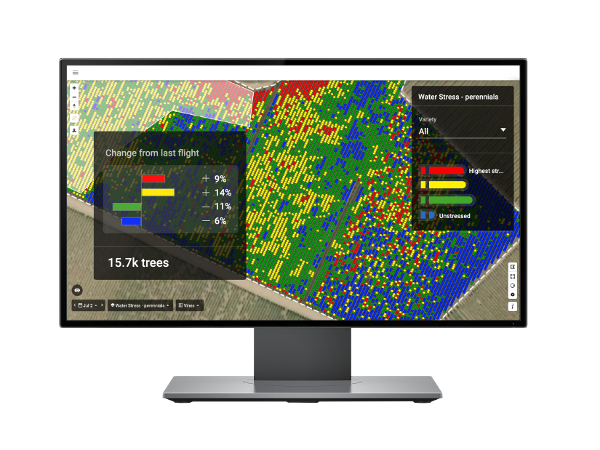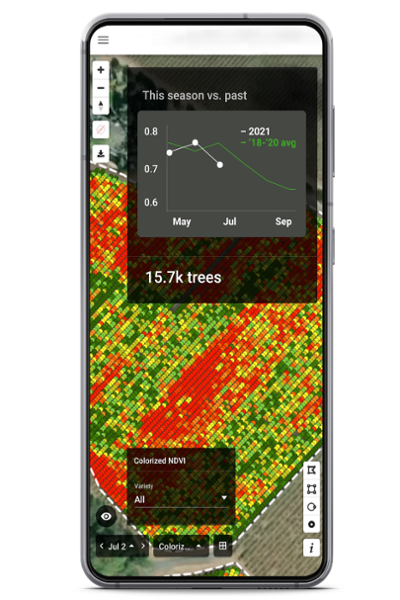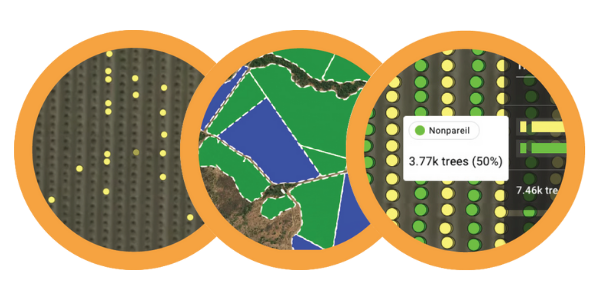Plant-level insights
Unlike other providers that analyze data only at the field level, Ceres Imaging delivers insights on crop health down to the individual tree or vine. This enhanced precision unlocks the ability to quantify changes—so you can measure progress, uncover trends, and evaluate the impact of your management strategy.

Common uses
-
Quantifying the impact of management decisions
-
Prioritizing limited resources
-
Comparing performance between varietals, over time, and against benchmarks

How it works
Ceres Imaging is unique among aerial imagery providers in offering plant-level insights. While other imagery simply separates crops from background elements like soil and shadow, Ceres identifies and analyzes the canopy of each individual tree.
This allows the ability to “filter” for a specific management focus—for example, to view only highly stressed trees, or to view trees by varietal. Plant-level data also makes it possible to track and measure changes over time. With quantified feedback on what’s working in your irrigation strategy, it’s easier to prioritize resources and respond quickly to changing conditions in the field.

Customized views
Crop health data at the individual plant level unlocks the ability to customize your view to the task at hand. Pinpoint missing trees, assess crop stress by irrigation zone, or compare performance between varietals.
Ensuring accuracy
Ceres Imaging’s emphasis on quality begins even before we fly your fields.
Image capture
We capture imagery during peak daylight hours and under weather conditions that minimize distortion from shadows and cloud cover. Our highly sensitive, custom-built cameras detect minute changes in the multispectral range—allowing us to detect crop stress earlier than our competitors.
Processing and analysis
Imagery is geo-referenced and meticulously “masked” to ensure that only relevant information is evaluated. By making use of crop-specific data models and isolating the canopy from ground cover and other background noise, we prevent skewing of the data and enable a more accurate assessment of plant health.
Quality control
Imagery is assessed in-house by Ceres Imaging’s remote sensing experts, passing through multiple checkpoints before delivery in the Ceres Imaging app within 48 hours of the flight. Growers can access their data on a mobile device, tablet, or desktop computer.
More imagery and analytics
The difference between Ceres AI and other technologies I've used is the help I get from their expert team.
With Ceres AI we can take a more targeted approach to applying fertilizer and nutrients.
These flights can cover way more ground and provide more insight than a dozen soil moisture probes — and it's cheaper to implement.
The average Ceres AI conductance measurement from its imagery over the season has provided the best correlation with applied water.

